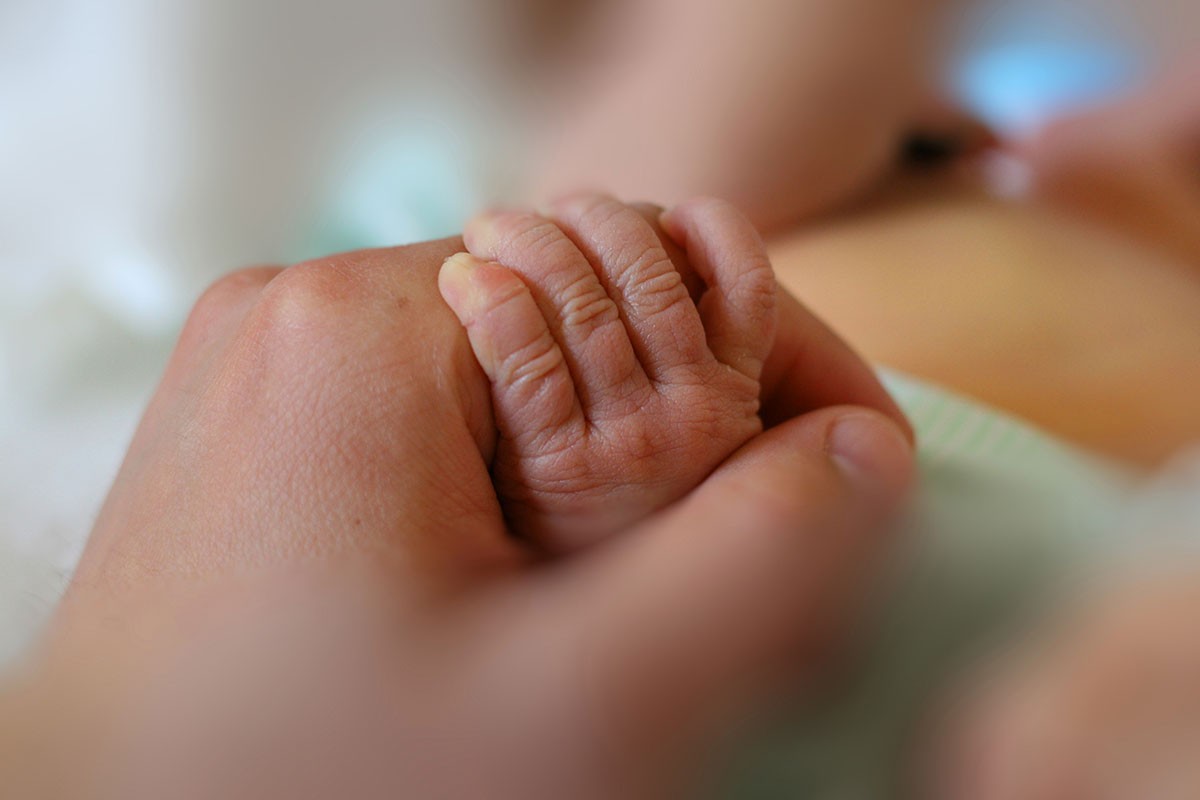
Image courtesy iStock.
Asthma risk lower with direct breastfeeding
Direct breastfeeding in the first three months of life appears to provide more protection against childhood asthma than either infant formula or expressed breastmilk, according to new findings from the CHILD Study.
The research, published this week in The Journal of Pediatrics, found that the lowest risk of asthma was observed among children who were exclusively fed at the breast until three months of age.
“It is increasingly common for infants to be fed expressed breast milk, especially in countries that do not offer paid maternity leave,” says lead researcher Meghan Azad, an assistant professor in the Rady Faculty of Health Sciences at the University of Manitoba, and a research scientist at the Children’s Hospital Research Institute of Manitoba (CHRIM).
The researchers analyzed data from 2,534 infants and their mothers who are participating in AllerGen’s CHILD Study—a national birth cohort study collecting a wide range of health, lifestyle and environmental exposure information from more than 3,500 mothers and children from pregnancy to school age. Infants were classified into four feeding categories at three months of age: (1) breastmilk only— all direct breastfeeding; (2) breastmilk only—some expressed breastmilk; (3) infant formula and breastmilk; or (4) formula only. At three years of age, the children were assessed for possible or probable asthma.
The researchers found that asthma risk was lowest among infants who received direct breastmilk only (8.8%) to three months, higher among infants receiving some expressed breastmilk (12.5%) or breastmilk and formula (14.9%), and highest among exclusively formula-fed infants (15.8%). These associations persisted after adjusting for maternal health and socioeconomic factors.
There are several possible explanations for the differences between direct and expressed breastmilk, according to co-author Annika Klopp, a pediatrician at the University of Manitoba.
“Refrigeration, freezing, thawing and heating—routine steps between pumping and feeding—may degrade the bioactive components of breastmilk which help protect against asthma,” she says. “Another possibility is that infants who are fed at the breast develop stronger lungs through the physical act of suckling, and this could explain the difference in asthma risk.”
The findings suggest that programs and policies to support direct breastfeeding, such as paid maternity leave, could have a meaningful impact on asthma prevention at the population level.
“Our study found that over half of exclusively breastfed infants in the CHILD Study were receiving some expressed breastmilk,” says Klopp. “In the US, where the average mother returns to work after just 10 weeks, the proportion is even higher—85% according to the US Infant Feeding Practices Study.”
However, recognizing the many challenges new mothers encounter, the researchers emphasize their goal is not to discourage those who cannot or choose not to provide direct breast milk exclusively.
“Direct breastfeeding seems to be most protective against asthma development, but expressed breast milk still provides benefits compared to infant formula,” adds Azad. “Our hope is that this study will guide future research on the best ways to store and feed expressed milk, and that it will inform societal policies to protect, promote and support breastfeeding.”
About the CHILD Study
Launched in 2008 by CIHR and AllerGen NCE, the CHILD Study is tracking thousands of Canadian families and their infants over early childhood to help determine the root causes of chronic diseases, such as asthma, allergies and obesity, among other conditions. With its National Coordinating Centre based at St. Joseph’s Healthcare Hamilton, the CHILD Study relies upon the world-recognized expertise in birth cohorts, and in allergy and asthma treatment, care and training, of McMaster University and its Faculty of Health Sciences, together with their affiliated teaching hospitals, Hamilton Health Sciences and St. Joseph’s Healthcare. The CHILD Study spans four provinces, involving over 140 multidisciplinary researchers, students and research staff. Watch the CHILD Study videos.
About the Children’s Hospital Research Institute of Manitoba
The Children’s Hospital Research Institute of Manitoba was established in 2001. CHRIM is the research division of the Children’s Hospital Foundation of Manitoba. At the Institute, more than 270 world-class pediatric medical researchers, technical staff, students and support staff are involved in over $10 million of research and clinical trial activity each year.
Research at the University of Manitoba is partially supported by funding from the Government of Canada Research Support Fund.







